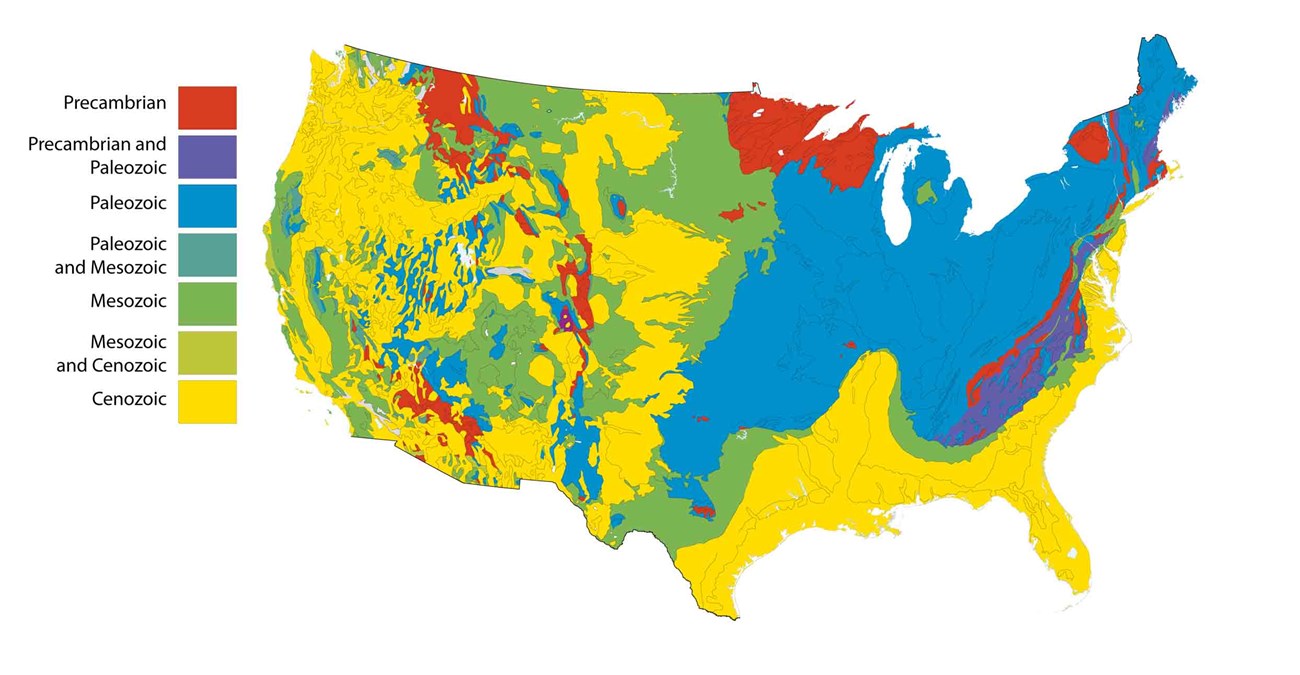
NPS Photo/M.Reed
During the immense span of time that has elapsed since life first emerged on the Earth 3.4 billion years ago, environmental conditions have changed and different groups of plants and animals have appeared, flourished, and disappeared. Our knowledge of this history is derived from the rocks that comprise the crust of the Earth. Over the years scientists have written the geological history of the earth by studying the composition, structure, and relationship of rocks and the fossils they contain.
The oldest rocks in the parks are Precambrian in age, from 3 billion to 600 million years old. This time interval saw the development of algae, fungi, and soft-bodied marine plants and animals. The distribution of Precambrian rocks is worldwide, but in the United States rocks of this age are found in the cores of major mountain ranges. They also occur in the Lake Superior region and in a few localities in the southwest.

Precambrian Geology - East
- Blue Ridge Parkway, North Carolina and Virginia—[Geodiversity Atlas] [Park Home]
- Great Smoky Mountains National Park, North Carolina and Tennessee—[Geodiversity Atlas] [Park Home]
- Isle Royale National Park, Michigan—[Geodiversity Atlas] [Park Home]
- Keweenaw National Historic Park, Michigan—[Geodiversity Atlas] [Park Home]
- Shenandoah National Park, Virginia—[Geodiversity Atlas] [Park Home]
- Voyaguers National Park, Minnesota—[Geodiversity Atlas] [Park Home]
Precambrian Geology - West
- Black Canyon of the Gunnison National Park, Colorado—[Geodiversity Atlas] [Park Home]
- City of Rocks National Reserve, Idaho—[Geodiversity Atlas] [Park Home]
- Colorado National Monument, Colorado—[Geodiversity Atlas] [Park Home]
- Glacier National Park, Montana—[Geodiversity Atlas] [Park Home]
- Grand Canyon National Park, Arizona—[Geodiversity Atlas] [Park Home]
- Grand Teton National Park, Wyoming—[Geodiversity Atlas] [Park Home]
- Lake Mead National Recreation Area, Nevada—[Geodiversity Atlas] [Park Home]
- Mount Rushmore National Memorial, South Dakota—[Geodiversity Atlas] [Park Home]
- Rocky Mountain National Park, Colorado—[Geodiversity Atlas] [Park Home]
Last updated: October 26, 2020
